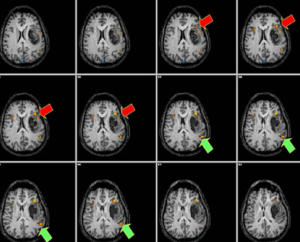Advanced MRI Techniques in Neurosurgical Planning: Improving Precision and Outcomes
Advanced techniques of MRI mark a new era when neurosurgeons plan operations. The most important point is that these techniques give distinct images of the brain, hence helping to locate the tumors or any other problem with precision. Advanced techniques in imaging facilitate surgeons to enter into each complex case with greater confidence and accuracy.
This article outlines the role of advanced MRI in shaping neurosurgical strategies and specifies the latest development in MRI technologies contributing to better visualization and improvement in surgical outcome. Understanding these developments can lead to better treatment plans and safer surgeries for patients.
Key Takeaways
- Advanced MRI techniques improve precision in neurosurgical planning.
- New imaging technologies enhance the visibility of brain structures.
- Better MRI images lead to safer surgical approaches and outcomes.
Fundamentals of MRI in Neurosurgical Planning
Magnetic Resonance Imaging (MRI) gives essential information to neurosurgery treatment planning. It helps the doctor to visualize the structure of the brain, tumors, and blood vessels; thus, surgical intervention can be safer and more effective.
Principles of Magnetic Resonance Imaging
MRI uses powerful magnets and radio waves to create precise images of the brain, aligning hydrogen atoms in the body. Once the magnetic field is turned off, the hydrogen atoms start emitting signals that are captured by the MRI machine.
Sequences can be modified to emphasize various tissue types. For example, T1-weighted images are useful for reviewing anatomy, while T2 weighted images emphasize abnormal findings. Additional detail of some areas may be provided when contrast agents are ingested by the patient, which can help to better explain significant features about tumors or lesions.
Applications to Brain Tumor Resection
MRI is crucial in the planning of brain tumor surgeries, allowing one to establish the size of the tumor, its location, and the type. The establishment of the mentioned parameters will make it possible for surgeons to establish the best way removal can be effected safely.
Pre-operative MRI usually includes functional imaging. This outlines the vital areas that need to be avoided during surgery, such as the speech or movement centers. MRI is also important after surgery; hence, it confirms completeness of resection and complication rates, ensuring the safety of the patient.
In vascular malformation surgery, the role of MRI is very important. A correct road map of the blood vessels is given. The abnormalities that can be diagnosed with this modality include AVM and aneurysms. The surgeon will then visualize the morphology of the brain and its blood flow because of the high-resolution images.
MR angiography is a special technique employed here. It gives detailed pictures about the blood vessels without the need for invasive procedures. With such clarity, surgical planning is more accurate, resulting in much-improved results.
Pioneering Advances in MRI Technology
Recent innovations in MRI have revolutionized the capabilities of neurosurgeons to plan for and perform surgery. High-field MRI, functional MRI mapping, and diffusion tensor imaging currently are being employed as important means through which precision and effectiveness in surgical planning are enhanced.
High-Field MRI Systems
High-field MRI systems operate at higher magnetic field strengths, typically 3 Tesla (T) or more. Such machines provide clearer and more detailed images compared to standard 1.5 T systems. Increased resolution helps to better visualize small lesions or abnormalities in the brain.
Benefits include shorter scan times and improved signal-to-noise ratios. This will enable subtle changes in brain structure to be detected. High-field MRI is particularly good for the delineation of tumors, vascular malformations, and neuronal tracts.
However, drawbacks include increased susceptibility artifacts, which may degrade image quality, mainly around air-tissue interfaces. But these are continually being overcome as technology improves, making high-field MRI a very valuable tool for neurosurgeons.
Functional Magnetic Resonance Imaging Mapping
In fMRI mapping, the changes in blood flow are detected to measure activity within the brain. The technology pinpoints the most critical areas of the brain responsible for basic functions related to movement or speech.
Patients with these conditions are asked to do certain things during an fMRI test, which would excite certain regions of the brain. The images resulting from this would reveal activity in real time and allow surgeons to know where to operate while avoiding those areas necessary to vital functions.
fMRI is particularly useful in tumor resection planning. It avoids injury to motor skill and language areas of the brain. It is a non-invasive procedure that, with no or minimal risk, provides essential information that might be obtained from procedures that are more invasive.
Diffusion Tensor Imaging (DTI)
Diffusion tensor imaging is a magnetic resonance imaging technique that describes the anisotropic diffusion of water molecules within white matter tracts of the brain. Diffusion tensor imaging is thus an important modality in mapping neural tracts and brain connectivity.
DTI also yields 3D models of white matter, showing surgeons how regions of the brain are connected. This insight is crucial in planning surgeries when tumors lie near important neural structures.
DTI may also be used to determine injuries to brain fibers from either trauma or illness. This imaging modality delineates disruptions in the integrity of white matter in traumatic or neurodegenerative brain diseases, which in turn enhances surgical accuracy and improves the outcomes for patients.

Also Read :
- The Intersection of Biomedical Engineering and Healthcare Innovation
- Tech Innovations in Healthcare: Improving Patient Care with AI
- Medical technology encompasses a wide range of tools, techniques,
- Biomedical Engineering Projects: Innovative Solutions for Healthcare
- Top 10 Emerging Technologies in 2024: A Comprehensive Guide
